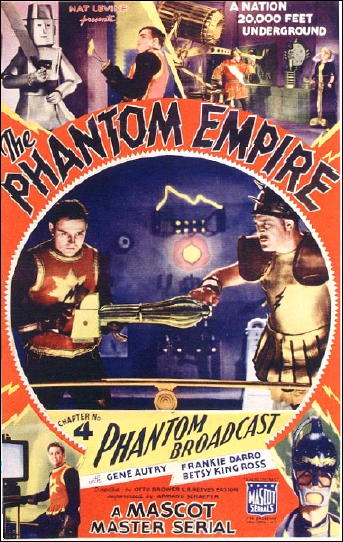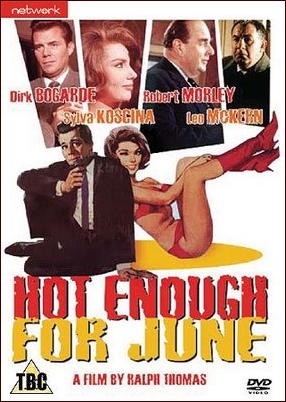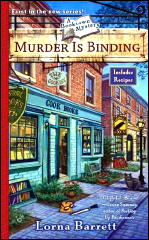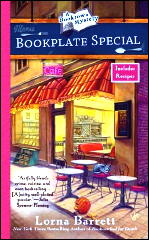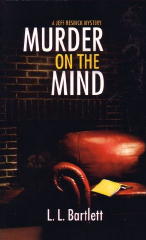August 2009
Monthly Archive
Fri 28 Aug 2009
A MOVIE SERIAL REVIEW BY DAN STUMPF:
THE PHANTOM EMPIRE. Mascot, 1935. [12-episode serial] Gene Autry … Gene Autry, Frankie Darro, Betsy King Ross, Dorothy Christy, Wheeler Oakman, Charles K. French, Warner Richmond, J. Frank Glendon, Smiley Burnette. Directors: Otto Brower & B. Reeves Eason.
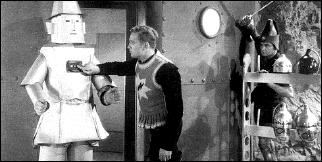
Viewing [and reviewing] Batman led on to The Phantom Empire, but I couldn’t start that till I read James Churchward’s 1931 opus The Lost Continent of Mu.
Churchward’s book is non-fiction, of a sort, dealing with his discovery of ancient clay tablets in Burma telling of an advanced civilization somewhere to the East, which he compares to inscriptions from the Mayans and Aztecs locating the cradle of civilization somewhere to the West.
He then takes similarities in oriental picture-writing, Egyptian hieroglyphics and pre-Columbian artifacts from the New World, and concludes that there must have been an advanced society somewhere in the Pacific that spread its culture over the world, then sank into the sea, which he calls Murania, or Mu for short.
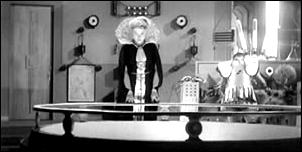
Well, I don’t know about you, but for me that’s kind of a stretch. Churchward spends the book supporting this theory, but I keep running into phrases like, “geologists are wrong…,” “Egyptologists are wrong…,” “archaegeologists are wrong…” till I wonder how he got a monopoly on Truth.
And as his story gets more and more embroidered, with details about the advanced civilization, its people (Who, he insists, must have been white.) and the aftermath of its fall, this sounds less like Science and more like the ramblings of Siegel and Schuster.
Closing the book, I had to wonder why anyone ever took it seriously in the first place, but apparently someone did, and still does, because the book and its sequels keep getting reprinted.
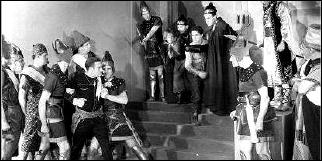
All the reference books say The Phantom Empire was clearly based on Churchward’s work, but I couldn’t see it myself. Empire deals with Gene Autry’s efforts to save Radio Ranch from unscrupulous land-grabbers trying to get to a secret uranium deposit on the property, and the people of Lemuria who inhabit an advanced underground civilization (also called Mu for short) which can be reached only by an elevator which opens up somewhere near the uranium deposits on Radio Ranch.
Yeah, it’s kind of Out There, particularly with Gene Autry constantly trying to escape from the bad guys in time to get back to the ranch and do his weekly mortgage-paying radio show, but I found it no harder to ingest than Churchward’s hoke, and considerably faster-moving.
Mascot serials were never believable, but they were somehow always fun, and the underground kingdom, with its robots, death rays and sexy queen offer a lively time for anyone who can descend to their level. As for The Lost Continent of Mu, I have to say that for a book about an advanced civilization sinking into the sea, there are some awfully slow spots.
Fri 28 Aug 2009
THE SPY WHO PARODIED: THREE BRITISH SPY SPOOFS FROM THE SIXTIES, PART III
by David L. Vineyard.
Previously on this blog:
Part I: Where the Spies Are (1966).
Part II. The Liquidator (1965).
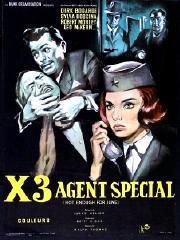
AGENT 8 3/4. J. Arthur Rank, 1964. Originally released in the UK as Hot Enough for June. Dirk Bogarde, Sylvia Koscina, Leo McKern, Robert Morley, Roger Delgado, John LeMessurier. Based on the novel Night of Wenceslas by Lionel Davidson. Director: Ralph Thomas.
The earliest of the Bond spoofs and still one of the best, this bright comedy has a reluctant Bogarde drafted into service in the British Secret Service for a dangerous mission in Soviet occupied Czechoslovakia, where he finds himself seduced, pursued, and never quite sure what he is doing there.
Unlike the other films I’ve been discussing, this was not a series novel, but one of only a handful written by Lionel Davidson, one of the most critically praised spy novelists, whose books The Rose of Tibet, The Menorah Men, The Sun Chemist, and Kolymsky Heights are among the best thrillers of the 20th century. Davidson is not prolific, but enthusiasts know that every one he pens is a jewel.
Bogarde is always worth watching when allowed to play to his humorous side, and between the gorgeous Koscina and the droll black humor delivered by McKern and Morley, this film succeeds as a bright and witty charmer. It is a little short on action and perhaps relies more on comedy than the others reviewed here, but it is also well worth finding and viewing.
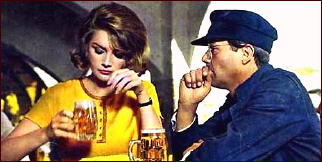
This is far more comedy than the others, and the satirical barbs are somewhat sharper. In some ways it is closer to an Ealing comedy or even The Mouse That Roared than a Bond spoof, though there are certainly references to Bond beyond the title.
Davidson’s novel is largely a place for the script to take off from, but some of the humor is still derived from it, and it is hard not to see Bogarde as the personable hero who’s in over his head…
In conclusion:
The spy film craze went from the sublime to the ridiculous, and too soon even the Bond films turned to cannibalizing themselves, but it also produced some bright, funny, attractive films like this and the others reviewed here. At their best they hold up better than many more serious films from the era, and they often feature lesser known players or character actors like McKern, Morley, and others in outstanding performances.
No one is claiming them as great art, but they are a snapshot of an era, and even today, with Bond still around and now competing with Jason Bourne and Mission Impossible franchises and the Austin Powers films (inspired by the American Bond spoof, Our Man Flint), they are a reminder that everything old really is new again — eventually.
Thu 27 Aug 2009
Posted by Steve under
Authors ,
ReviewsNo Comments
THE BACKWARD REVIEWER
William F. Deeck
STANLEY CASSON – Murder by Burial. Hamish Hamilton, UK, hardcover, 1938. Paperback reprint: Penguin, UK, 1943. US hardcover edition: Harper & Brothers, 1938.
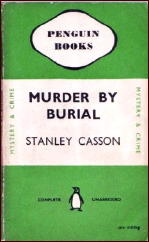
Col. Theodore Cackett, R.E., D.S.O., has formed in Kynchester the Roman Guard for the Regeneration of Britain and is now planning [to] erect a monument to the memory of the Emperor Claudius in recognition of the civilizing influence that the Romans brought to the Isles.
On the other hand, Canon Burbery knows that the early Britons were a great deal more civilized than commonly supposed. It is his plan to begin an archaeological dig to prove that Kynchester was the stronghold of King Cunobeline (or Cymbeline, as Shakespeare would have it). He hopes that the citizens of the city will take the claims in behalf of the Romans less seriously after they have been shown their heritage.
A rivalry of this sort is bound to create bad feelings. Add to it the Canon’s blackballing of Cackett at the learned Augusteum Club and Cackett’s becoming involved in a plot to arm the landowners of England to defend against a possible revolution, and anything can happen.
In this case a death occurs. Following a fortuitous investigation by a professional archaeologist, questions are raised whether the death was Indeed “an act of God.”
Well written, quite literate, amusing in parts, informative on both archaeology and numismatics. The dialogue sometimes seems more lecture than conversation, but the lectures are interesting and thus tolerable.
Fascinating also is Miss Boddick’s expatiation on Holmes’s view of the country as a scene of crime: “You Londoners will never realise the depths of depravity of the countryside Why, the English countryside is one congealed mass of intrigue and petty spite. That is why almost every murder story is placed in a country town or in some remote village, where all the natural passions have free play.”
– From The MYSTERY FANcier, Vol. 10, No. 3, Summer 1988.
Bio-Bibliographic Data:
This is the only mystery that the author wrote. From an online website comes the following information:
Stanley Casson (1889-1944) was a multi-talented art scholar and army officer who read Classical Archaeology at Oxford, served as Assistant Director of the British School at Athens, Special Lecturer in Art at Bristol University, and was Director of British Academy Excavations at Constantinople in 1928-1929. His publications include numerous articles and books on the subject of Classical Antiquities.
Thu 27 Aug 2009
Posted by Steve under
Reviews[4] Comments
A Review by ALLEN J. HUBIN:
COLLIN WILCOX – The Third Figure. Dodd Mead, hc, 1968. Hardcover reprint: Detective Book Club, 3-in-1 edition, August 1968.
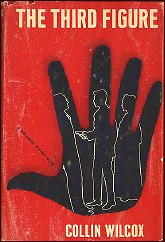
Clairvoyance, says the dictionary, is the ability attributed to some of being able to see the unseeable. I suspect a good many of the investigators who have practiced down through the history of detective fiction might justly have been accused of solving by clairvoyance rather than deduction.
Collin Wilcox now provides us with Stephen Drake, whose investigational success is expressly attributed to occasional attacks of clairvoyance.
Drake, a newspaper reporter appearing in his second book, is approached by the estranged wife of a murdered gangster (local head of “The Outfit”) with the offer of $10,000 for the solution of the crime. Drake, whose characterization must be the ultimate reaction against hardboiled detectives (he may be the first of the unboiled detectives — which is consistent with the author’s intent to create a “gentle hero”) accepts the job against his own better judgment.
His subsequent involvements with various echelons of “The Outfit” give him ample cause to regret that decision. His investigation consists of a good deal of aimless muddling about, hoping to set the stage for clairvoyance — mostly he gets paroxysms of fear — and eventually he arrives at the same solution I’d reached some 75 pages earlier.
Collin Wilcox exhibits some rough talent which future books will hopefully polish, and Stephen Drake is interesting enough to make this volume worth reading. Drake’s clairvoyance is treated well: as an inexplicable and fallible, but occasionally useful, source of insight, not as a wondrous and magical tool.
However, I found the book difficult to get involved in, the Drake characterization a little too gentle to identify with, and the plot somewhat underweight. Although Drake’s success is allegedly based on clairvoyance, his approach is more crude deduction than anything else. I suspect I would find the story of a truly clairvoyant solution to a crime intensely frustrating reading.
One further suggestion: with Collin Wilcox, Colin Wilson and Colin Watson active in the mystery field, won’t someone adopt a pseudonym?
– From The Armchair Detective, Vol. 1, No. 3, April 1968.
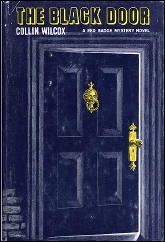
[UPDATE] 08-27-09. Al mentioned a previous appearance for Stephen Drake; that was The Black Door (Dodd Mead, 1967), but perhaps finding plausible cases for a clairvoyant detective to solve proved too great a challenge, as there was never a third.
When I was looking through the first volume of TAD this evening, I spotted this review right away. Even though it was written over 40 years ago, my immediate thought was that it ties in perfectly with the series of comments following the previous post, the discussion (pro and con) having to do with combining psychic phenomena with detective fiction.
By the way, while Collin Wilcox did write two novels under the pen name Carter Wick, most of his mysteries were written under his own name; his most commonly used series character was Sgt. (later Lt.) Frank Hastings, of the San Francisco Police Department.
Wed 26 Aug 2009
REVIEWED BY WALTER ALBERT:
LORNA BARRETT – Bookmarked for Death. Berkley Prime Crime, paperback original; 1st printing, February 2009.
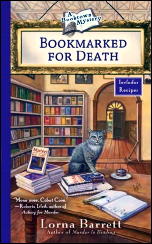
I ordered this sight unseen, attracted by the description of it as a bookstore mystery. What I didn’t realize was that it also included recipes, a seemingly popular device for some mystery novels that I have, up to now, avoided.
Zoe Carter, author of a popular series of mysteries, is murdered during a signing at Haven’t Got A Clue, a mystery bookstore in Stoneham, New Hampshire. Tricia Miles, the proprietor of the bookstore, has a rocky relationship with the town’s sheriff and decides to investigate the case on her own in an attempt to speed up the identification and capture of the murderer.
She has a sister, irritating to other people and, I suspect, to some readers as well; an ersatz boyfriend to whom she is not yet committed; and a tendency to put herself in situations that put her own life at peril.
Tricia and I both fingered the wrong suspect, but the outcome is only slightly delayed. One of the chief suspects is a woman who has a bakery. and she keeps bringing treats to Tricia that are described in such a way as to provoke a reader with a sweet tooth into an instantaneous and severe craving for an over-caloried snack.
I made it through the book without succumbing, but the fragrance lingers on. Now you know why I’ve avoided recipe mysteries.
Most of the characters are quickly introduced in the first chapter, which had me retracing my steps more than once to find out who in heck the author was talking about. Distinctive characterizations are not her strong suit, but the plot has some tricky, intriguing turns, the setting is affectionately evoked (with a bookstore cat, Miss Marple, to pull in the animal lovers).
In short, all the bases are hit for a conventional, undemanding cosy that’s dispatched with some flair.
Bibliographic Data: Author’s Name: Lorraine Bartlett.
Booktown Mystery Series, as by Lorna Barrett:
1. Murder Is Binding. Berkley, pbo, April 2008.
2. Bookmarked For Death. Berkley, pbo, Feb 2009.
3. Bookplate Special. Berkley, pbo, Nov 2009.
The Jeff Resnick series, as by L. L. Bartlett:
[After insurance investigator Jeff Resnick is mugged, he discovers the resulting brain injury has left him able to sense people’s secrets.]
1. Murder on the Mind. Five Star, hc, Dec 2005; Worldwide Mystery, pb, Oct 2007.
2. Dead in Red. Five Star, hc, June 2008.
Wed 26 Aug 2009
REVIEWED BY DAN STUMPF:
MURRAY LEINSTER – The Monster from Earth’s End. Gold Medal s832, paperback original; 1st printing, January 1959.
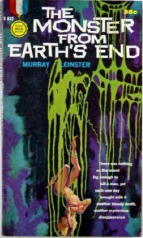
In the mood for something to make my hair — such as it is — stand on end, and getting pretty discouraged in my quest when I had a few minutes off one day, popped into a used book store and picked up (for 50 cents) The Monster from Earth’s End by Murray Leinster.
This is It: The genuine article, the real banana, a taut, suspenseful, exciting and genuinely creepy couple hours packed into 176 pages by a writer who knew how to do it.
The story, which owes a bit to the movie The Thing, is set in a remote island off the coast of Chile used as a way-station for supplies and scientists bound to and from an Antarctic research station.
Everyone on the island is eagerly tracking the progress of a north-bound plane bringing nine scientists and some botanical specimens from the South Pole for study when the pilot’s radio traffic suddenly becomes confused. Then panicky.
After more than an hour of erratic flying, the plane lands with the wheels up and cargo bay open — thus blocking the airstrip — and the only one left on board is the pilot, who immediately blows his own brains out.
Weird enough, but that’s just the start, as the staff on the island find themselves stalked at night by some unseen thing big enough to devour a man, pestered through the day by growing numbers of inch-long carnivorous crawling insects, and disbelieved by the brass on the mainland, who can’t get there anyway because the runway is blocked.
Leinster develops the story nicely, cleverly increasing the isolation of the island workers while developing character and situations. And the characterization here is ably done indeed; I’d swear I have worked with some of these guys. The result is a book I can recommend heartily to anyone looking to tingle a spine or two.
Tue 25 Aug 2009
STREET OF SHADOWS. Anglo-Amalgamated Film Distributors (UK) / Lippert Pictures (US), 1953. Released as The Shadow Man in the US. Cesar Romero, Kay Kendall, Edward Underdown, Victor Maddern, Simone Silva. Based on the novel The Creaking Chair by Laurence Meynell. Screenwriter & director: Richard Vernon.
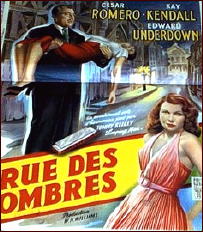
Laurence Meynell, to begin at what’s probably the wrong (but easiest) place to start, is in all likelihood unknown to all but the keenest of detective fiction fans, but he had one of the longest careers in the business, with his first mystery novel coming out in 1928 and his last in 1988 (when he was 89).
He also wrote non-fiction, poetry, children’s books and more. For a short online tribute to him, should you be interested, go here.
The book that Street of Shadows was based on, The Creaking Chair (1941), isn’t one I’ve happened to read, so whether the movie has any resemblance to it, I cannot tell you. It came to me (the film, that is) in DVD form, as part of a box set of Forgotten Noir films, not that in 1953 they had any idea that they were making noir films, only films with crime and lots of dark shadows, all the better to hide how few dollars (or pounds, rather) there were involved with the budget in making them.
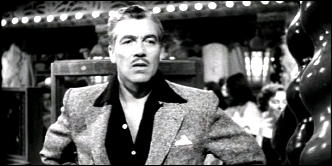
I will make no jokes about the movies in this set being “Forgotten.” I will point out that the version of Street of Shadows in this set is seven minutes longer than the one released in the US, so you will get your money’s worth that way, if nothing more. (And for the life of me, I cannot figure out what seven minutes might have been cut. The plot’s so compact that leaving anything out would leave the story line incomprehensible, or so it would seem to me.)
All seriousness aside, there are a couple of reasons for watching this movie, and I’m going to tell you right away that the story line isn’t particularly one of its strong suits. But Cesar Romero, whether he was playing the Cisco Kid or The Joker on the Batman TV series, never turned in a bad performance. Larger than life, perhaps, as he is here as Luigi, owner of a pinball club in London’s Soho district, but as always, he is also as natural before the camera as any actor I can think of.
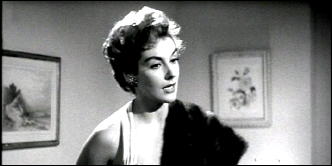
In Street of Shadows he is attracted to Barbara Gale, the wife of a man who’s bored with her, a fact that I can neither understand nor explain to you, since she’s a second reason for watching this movie, the most exquisitely beautiful Kay Kendall, married later to Rex Harrison not long before her tragic death from leukemia at the age of only 33.
Also notable in the cast is Victor Maddern as Luigi’s crippled pug-ugly janitor “Limpy,” who’s never had a real date with a woman, and Simone Silva (of Robert Mitchum fame) as Angele Abbé, the girl that Luigi has broken up with. When she’s found dead in Luigi’s penny arcade, the eyes of the police turn directly to him — and on the run he goes, in order to clear himself.
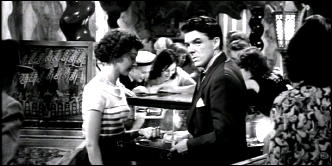
Don’t go looking for a major detective story here, even though an inspector from Scotland Yard has a sizable role to play (Edward Underdown).
Watch this instead for the almost incessantly dark settings, Cesar Romero’s strong performance, to see Kay Kendall at the height of her stylish beauty, and for several of the mechanical devices in Luigi’s arcade, including a head-bobbing, banjo-playing clown, the latter adding noisily to the atmosphere, along with a jukebox in grand 1950s style that I really wouldn’t mind having myself.
Tue 25 Aug 2009
THE SPY WHO PARODIED: THREE BRITISH SPY SPOOFS FROM THE SIXTIES, PART II
by David L. Vineyard.
Previously on this blog: Where the Spies Are (1966).
THE LIQUIDATOR. MGM, 1965. Rod Taylor, Jill St. John, Trevor Howard, Wilfred Hyde-White, Akim Tamaroff, David Tomlinson, Eric Sykes. Song over opening credits sung by Shirley Bassey. Based on the novel by John Gardner. Director: Jack Cardiff.
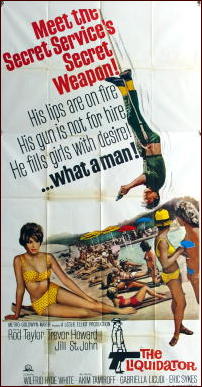
The driving Bondian theme song by Shirley Bassey, accompanied by handsomely done animated titles, lets you know what you are in for in this well done British spy spoof based on John Gardner’s Boysie Oakes novels.
Rod Taylor is well cast as Boysie, a handsome amoral bungler, coward, and general screw-up, who is mistaken by Colonel Mostyn (Trevor Howard at his best) of MI6 for a cold blooded killer when they meet during the fall of Nazi-held Paris.
Twenty years later Mostyn is second in command of MI6, and a series of defections and had headlines has convinced his boss (Hyde-White) that what the service needs is an executioner, a liquidator who will rid them of embarrassment before it gets that far.
Mostyn remembers Boysie, whom he finds burying his partner (they owned a pub together) whose wife he has been having an affair with.
Mostyn jumps to conclusions, and before he can protest, Boysie finds himself the private executioner for the British Secret Service.
And it isn’t a bad life. He has a lush apartment, a nice stipend, a sexy sports car, a parade of beautiful girls, and there is always the sardonic Mostyn’s secretary Jill St. John — if only there wasn’t that silly rule about inter-service romance.
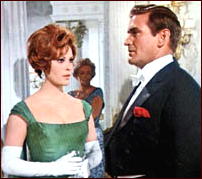
Then the first problem arises. They actually want Boysie to kill some one.
He does his best, but he just can’t manage it. But rather than give up his new life, he finds an out. Charlie Griffin is a sort of private version of Boysie, a likable Cockney (Eric Sykes) who finds this new political work both fulfilling and challenging. A perfect working relationship is formed.
Seems Boysie has it all now. If he could only control that libido.
Which is the one thing he can’t control. So he plans a little getaway with St. John on the Cote d’Azur. Just pull the wool over Mostyn’s eyes and have a little fun.
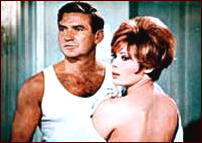
You know that won’t go well, and it doesn’t. Boysie is captured by a Soviet agent (Akim Tamiroff) and rescued by an annoying David Tomlinson, who puts him and St. John under house arrest.
But Boysie is as lucky as usual. They need him. There is a mission, a security test at an RAF base (wouldn’t you know it, just the idea of flying makes Boysie deathly ill), a mock assassination of the Duke of Edinburgh, Prince Philip.
Which is how Boysie ends up the only conscious person on a top secret RAF fighter plane with no idea how to land the thing.
Thanks to the cast and a script that closely follows Gardner’s novel, this spy spoof works both as a send-up of Bond and as damn good spy film on its own.
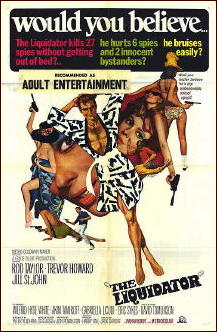
Taylor’s way around a reaction shot and his ability to look dashing and frightened out of his wits at the same time make him an ideal Boysie, and the direction by former cinematographer Cardiff is tight and well paced.
Howard, St. John ( who never got her due as an actress), Sykes, and Tomlinson are all superior, and you will find yourself humming the title song even if you don’t want to.
Gardner, a former commando who turned leftist Church of England reverend, wrote Boysie as a reaction to the Bond phenomena, proving himself a serious suspense and spy novelist. He guided Boysie, Moystn, and Griffin through ten novels with ironic endings, and then in the greatest irony, he ended up writing fourteen books about James Bond himself.
Boysie never made it to the screen again, but this was still one of the brightest moments of the spy craze.
Coming soon:
Agent 8 3/4 (1964) with Dirk Bogarde and Sylvia Koscina.
Editorial Comment: For my review of this same film, check it out here, posted in July of last year on this blog.
Mon 24 Aug 2009
A 1001 MIDNIGHTS Review
by Marcia Muller:
LAWRENCE BLOCK – Burglars Can’t Be Choosers. Random House, hardcover, 1977. Paperback reprints include: Jove, 1978; Pocket, 1983; Onyx, 1995; Harper Torch, 2004.
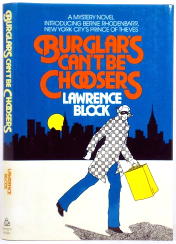
Bernie Rhodenbarr is no ordinary burglar; he is a professional of finesse, charm, and good common sense. At least that is what he tells himself when he enters an apartment on Manhattan’s Upper East Side, where he has been commissioned to find a blue leather box — a box he has been advised not to open.
Unfortunately, the box isn’t where it should be, nor is there anything else of interest, and Bernie is about to depart when the cops arrive. No novice at such problems, he successfully bribes the officers with his advance on the burglary commission, and is about to take his leave once more when one of them turns up a body in the bedroom.
The officer has the grace to faint on the Bokhara carpet; the other is distracted; and Bernie flees.
From here on out, Mr. Rhodenbarr is engaged in a flight to keep himself free, and a quest to find out just who attempted to frame him for the murder of entrepreneur J. Francis Flaxford-tenant of the apartment he was set up to burgle. There are a lot of amusing moments, a surprise roommate for Bernie, and a good amount of burglar lore.
Also entertaining are The Burglar in the Closet (1978), The Burglar Who Liked to Quote Kipling (1979), The Burglar Who Studied Spinoza (1980), and The Burglar Who Painted Like Mondrian (1983).
———
Reprinted with permission from 1001 Midnights, edited by Bill Pronzini & Marcia Muller and published by The Battered Silicon Dispatch Box, 2007. Copyright © 1986, 2007 by the Pronzini-Muller Family Trust.
Mon 24 Aug 2009
LAWRENCE BLOCK – The Burglar in the Closet. Random House, hardcover, 1978. Paperback reprints include: Pocket, 1981; Signet, 1997. Film: Warner, 1987, as Burglar, with Whoopi Goldberg as Bernie (as in short for Bernice).
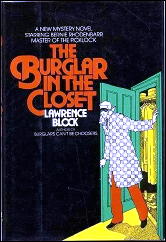
In Burglars Can’t Be Choosers, when last we met our favorite breaking-and-entering expert, Bernie Rhodenbarr, he was nabbed red-handed in an apartment which, quite unknown to him, came complete with a corpse in the bedroom.
This time, he checks around first. While the murder’s being committed, he finds himself accidentally locked up in a closet instead. The victim? No one important, only his dentist’s not-so-favorite ex-wife.
So, in the midst of the comedy routines provided by dentistry and other irreverent views of the world, Bernie is forced once again to become a detective on the run — burglars find it terribly difficult to get policemen to be sympathetic to their job-related problems. The end result is fast, fresh, breezy, and wow, was I slow on the clues!
– From The MYSTERY FANcier, Vol. 3, No. 3, May-June 1979
(very slightly revised).
Bernie Rhodenbarr novels:
1. Burglars Can’t Be Choosers (1977)
2. The Burglar in the Closet (1978)
3. The Burglar Who Liked to Quote Kipling (1979)
4. The Burglar Who Studied Spinoza (1980)
5. The Burglar Who Painted Like Mondrian (1983)
6. The Burglar Who Traded Ted Williams (1994)
7. The Burglar Who Thought He Was Bogart (1995)
8. The Burglar in the Library (1997)
9. The Burglar in the Rye (1999)
10. The Burglar on the Prowl (2004)
Short stories:
“Like a Thief in the Night.”
Cosmopolitan, May 1983.
“The Burglar Who Dropped In On Elvis.”
Playboy, April 1990
“The Burglar Who Smelled Smoke.”
Mary Higgins Clark Mystery Magazine, Summer/Fall 1997.
« Previous Page — Next Page »



